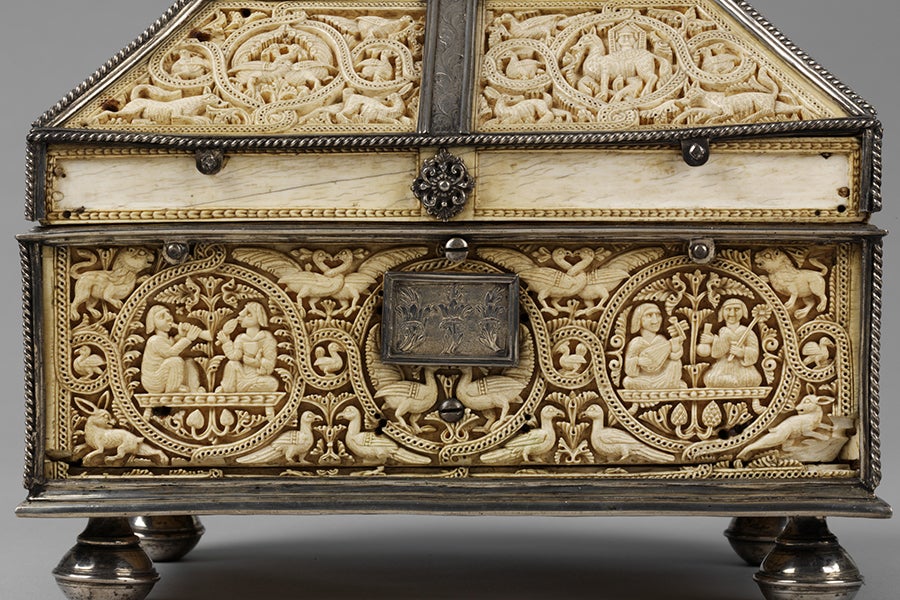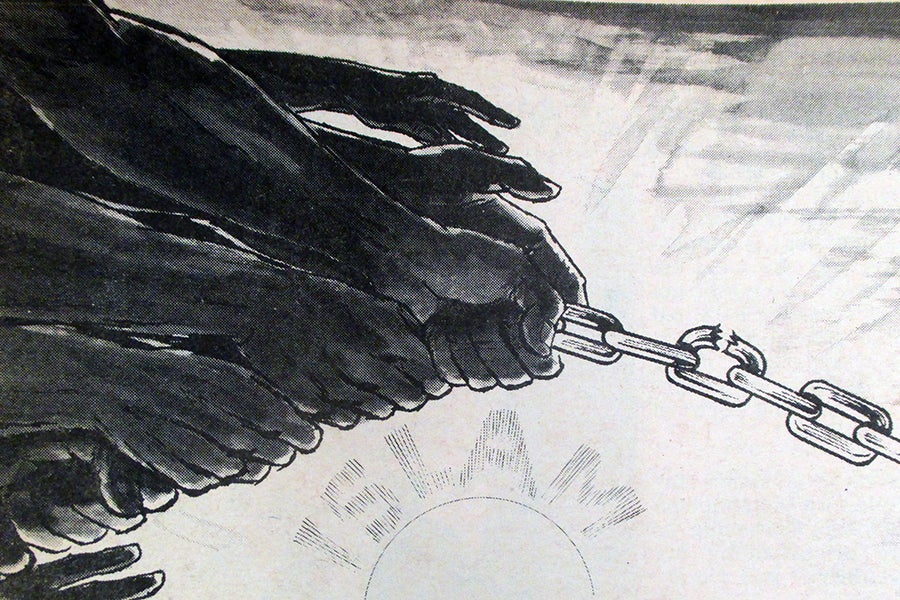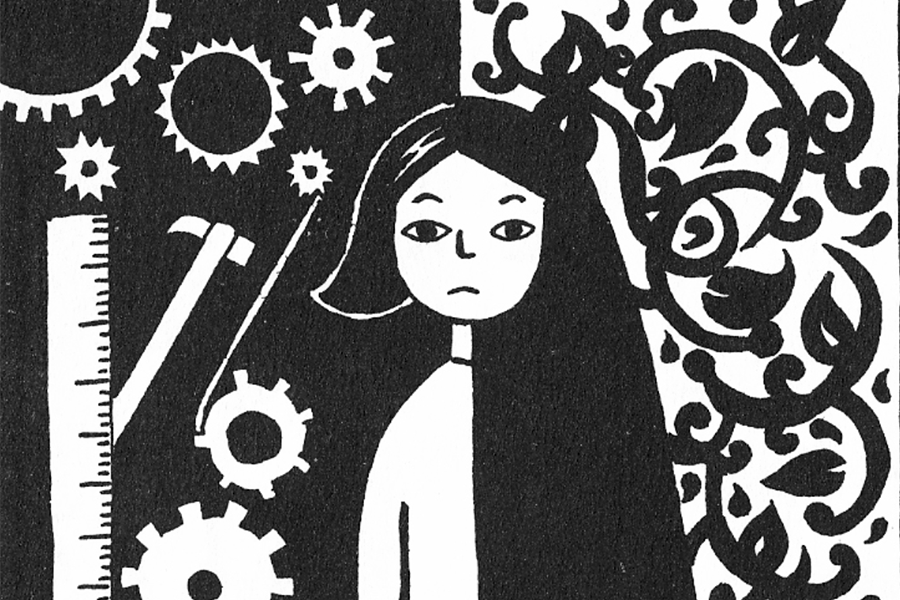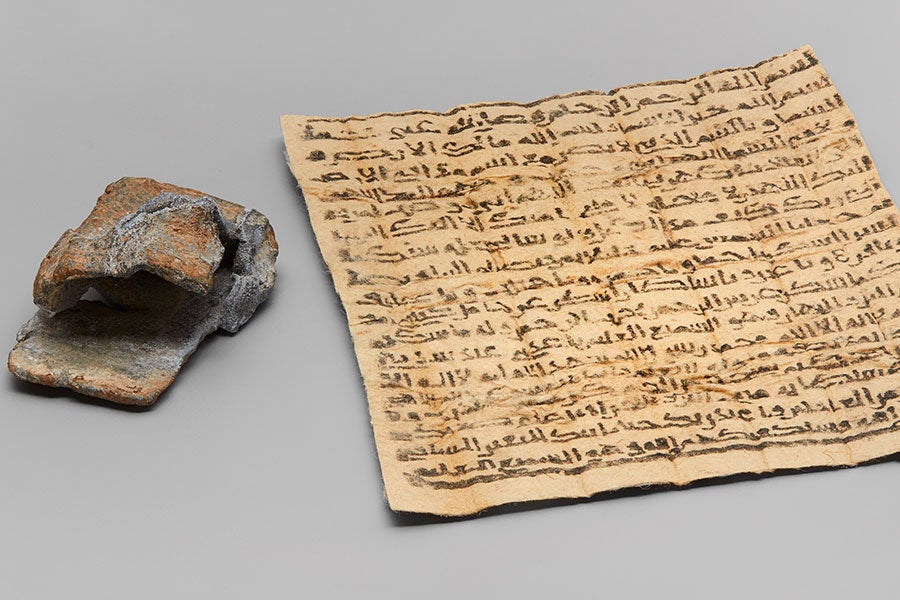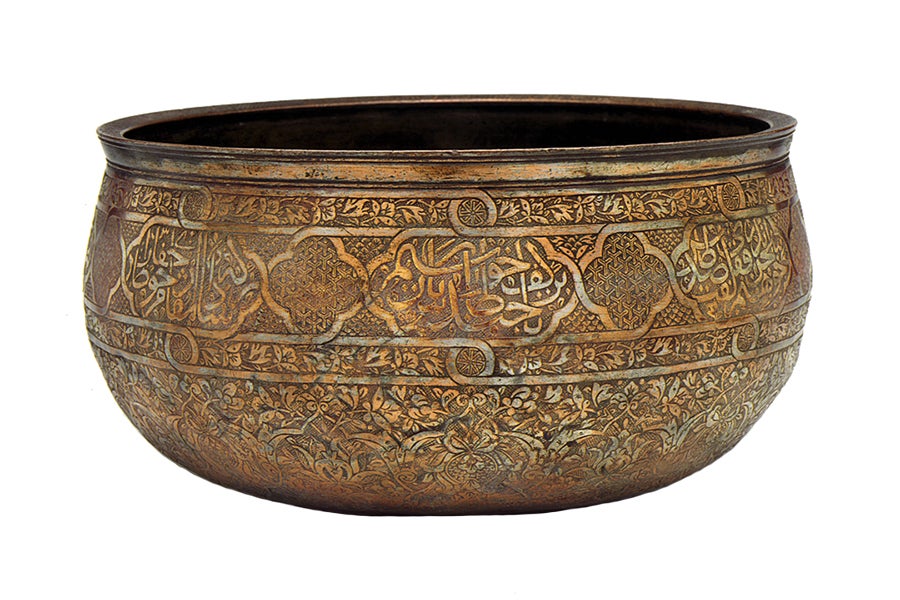Ivories from Islamic Spain Mariam Rosser-Owen Synopsis: This presentation focuses on carved ivories made in al-Andalus from the mid-10th to the mid-11th centuries. These objects were made for members of the ruling dynasties of Islamic Spain and are some of the most spectacular works of medieval Islamic art to survive. In order to shed light…
Category: Topics
“Do-For-Self”: The Visual Culture of the Nation of Islam
“Do-For-Self”: The Visual Culture of the Nation of Islam Christiane Gruber Synopsis: The Nation of Islam (NOI) was founded in 1930 as a politico-religious movement for Black empowerment in the United States. During the 1960s and 70s, the NOI’s official newspaper, Muhammad Speaks (1960-75) included numerous essays, op-eds, and illustrations promoting the moral and salvific…
Ottoman Costume Portraits: Photographs in the Elbise-i Osmaniyye
Ottoman Costume Portraits: Photographs in the Elbise-i Osmaniyye Erin Hyde Nolan Synopsis: This presentation examines the Elbise-i Osmaniyye, a catalogue of popular Ottoman costumes commissioned by the Ottoman court for the 1873 Vienna World’s Fair. The Elbise contains 320 pages of text and 74 phototypes of men and women in regional dress. Photographic albums such…
Marjane Satrapi’s Persepolis
Marjane Satrapi’s Persepolis Kerr Houston Synopsis: Marjane Satrapi’s Persepolis is regularly named as one of the best graphic novels ever written, and has been analyzed from a variety of narrative and historical angles. Importantly, it can also be seen as meaningfully engaging with the larger history of Islamic art and visual culture, and this presentation…
A Calligraphic Composition by Ismaʿil Jalayir
A Calligraphic Composition by Ismaʿil Jalayir in the Collection of the Metropolitan Museum of Art Maryam Ekhtiar Synopsis: This presentation focuses on a calligraphic composition with tiny vignettes made by the 19th-century Iranian painter Isma‘il Jalayir, now held in the collection of the Metropolitan Museum of Art. It attempts to unpack this mesmerizing painting, analyze…
The Ashab Mosque in Quanzhou: A Coastal Mosque in South China
The Ashab Mosque in Quanzhou: A Coastal Mosque in South China Sylvia Wu Khamseen Graduate Student Presentation Award 2022 Recipient Synopsis: This presentation examines the Ashab Mosque in Quanzhou, China. Although it has long been considered an exception among premodern Chinese mosques, the structure is rarely examined beyond formal comparisons against local and global architectural…
Persian Luster Tilework
Persian Luster Tilework between the Field and Museum Keelan Overton Synopsis: During the 13th and 14th centuries, potters in the Iranian city of Kashan produced one of the world’s most sophisticated forms of tilework: luster, or zarrinfam. Distinguished by a metallic sheen that shined like the sun, luster was ordered for the finest palaces, mosques, and…
Monsoon Winds and Ming Porcelains
Monsoon Winds and Ming Porcelains: Collecting and Displaying Chinese Ceramics at the Mughal Court Denise-Marie Teece Synopsis: While the porcelain collection donated by the Safavid ruler Shah Abbas to Ardebil, and the massive Ottoman Chinese porcelain collection held in Istanbul’s Topkapı Palace, are well known and relatively well published, the East Asian ceramic collections of…
Two Islamic Amulets in the Aga Khan Museum
Two Islamic Amulets in the Aga Khan Museum: Inked Surfaces, Hidden Stories Christiane Gruber Synopsis: Humans have sought protection from pain, harm, and negative forces since time immemorial. In Muslim lands, invocations to God and verses from the Qur’an are believed to be especially protective, and so appear on various objects over the centuries. Discover…
On a Tinned Copper Bowl and Designs on Paper
On a Tinned Copper Bowl and Designs on Paper Linda Komaroff Synopsis: This presentation explores a deluxe tinned copper bowl at the Los Angeles County Museum of Art (LACMA), which dates from the Timurid period (1370–1506). Its inscribed Persian verses offer a first-hand account about the making of such objects, especially their elaborate and highly…


